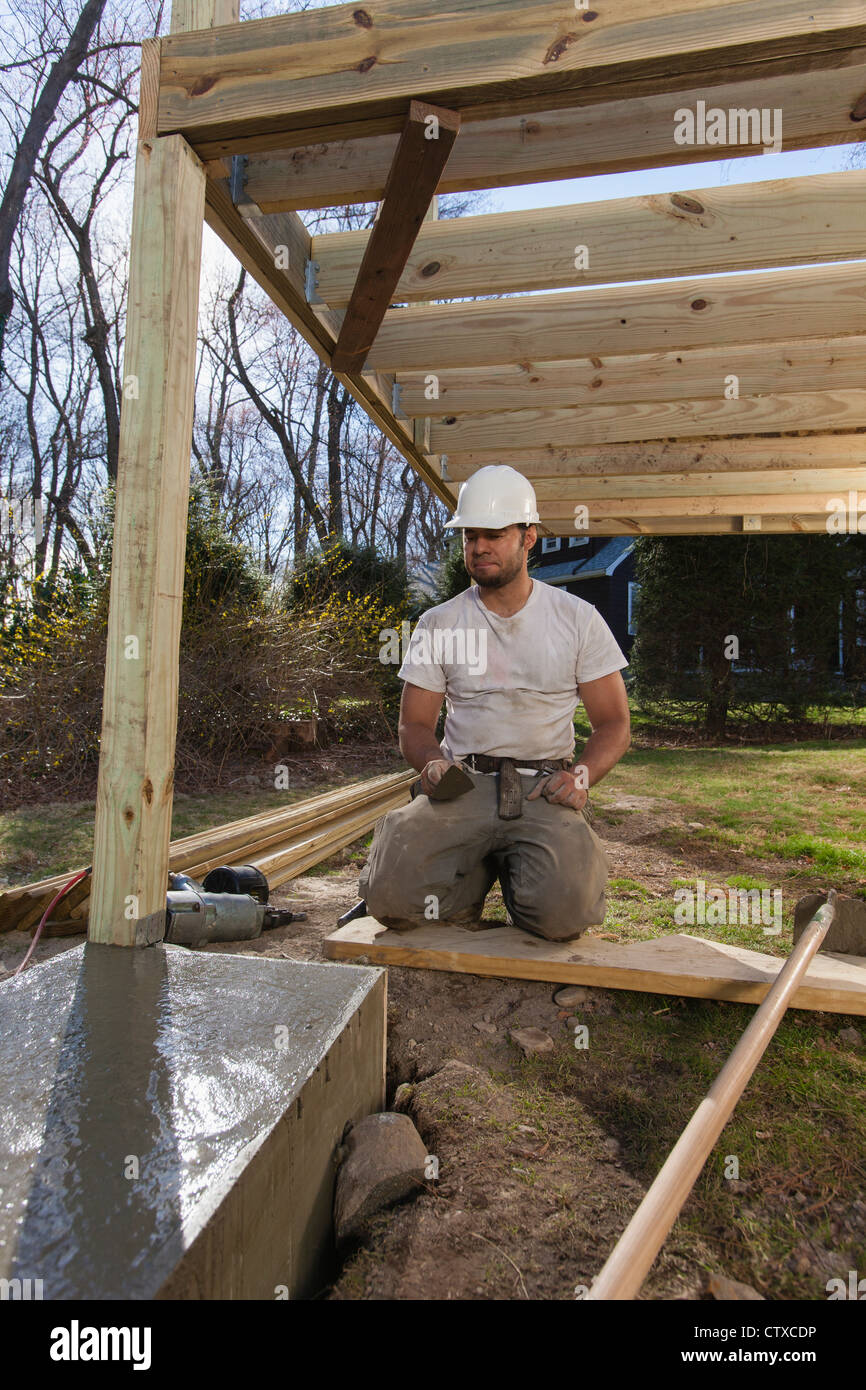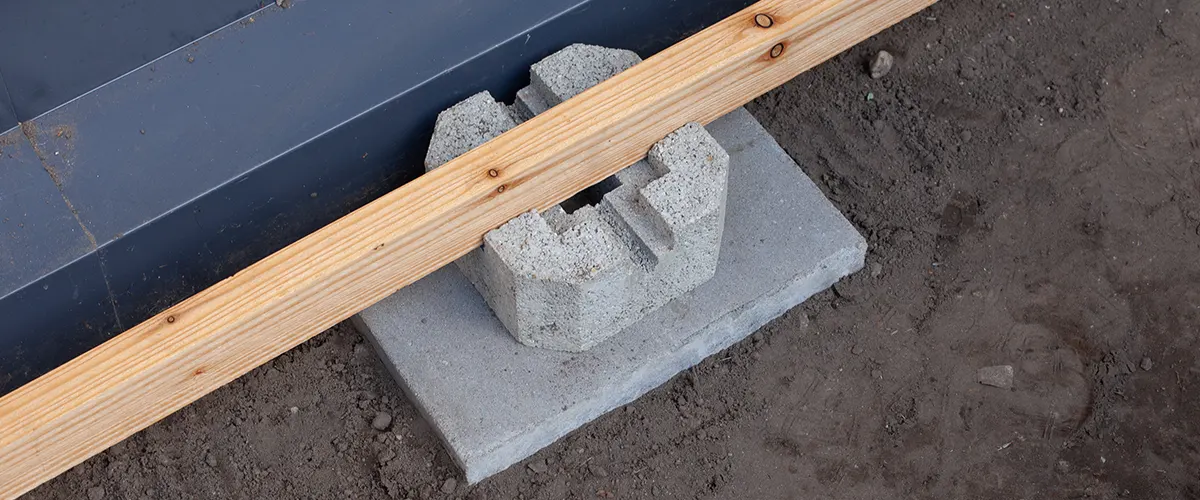Specialist Tips for Setting Up Deck Footings to Assistance Your Outdoor Room
When it comes to developing a deck, one of one of the most important elements to consider is the installment of correct footings. These grounds are the foundation upon which your exterior room will rest, giving security and assistance for several years to find. Yet exactly what does it take to mount deck footings appropriately? In this discussion, we will certainly discover professional ideas and strategies that can help guarantee a effective and long lasting deck installation. From picking the appropriate sort of grounds to avoiding typical blunders, we will provide you with the knowledge and understandings you need to with confidence start your deck-building trip. So, let's dive right in and find the secret to a strong and long-lasting outdoor area.
Importance of Proper Deck Footings
Proper deck grounds are vital for guaranteeing the security and durability of your exterior area. Without solid and appropriately installed grounds, your deck might end up being unpredictable, leading to security hazards and expensive repairs.

Along with stability, proper deck grounds additionally add to the long life of your outside room (Deck Footings). Grounds that are made and created to endure the aspects and dirt conditions in your area will certainly assist avoid the deck from resolving or moving in time. By guaranteeing the footings are effectively sized and mounted, you can reduce the threat of damages to the deck structure, extending its life-span and lowering the requirement for pricey repair work or replacements

Picking the Right Type of Footings
When selecting the suitable kind of footings for your deck, it is essential to take into consideration factors such as soil conditions, regional building regulations, and the general style of your outside area. The sort of footing you choose will certainly play an essential role in guaranteeing the stability and longevity of your deck.
One typical kind of ground is the concrete ground. Concrete footings are appropriate for the majority of dirt conditions and offer superb assistance for decks. They are generally set up listed below the frost line to stop changing and settling due to freezing and thawing cycles. Another option is helical piers, which are optimal for locations with unsteady dirt or high water tables. These piers are screwed right into the ground and supply solid assistance for the deck.
In some situations, you may need to use specialized grounds, such as heap grounds or deep structures, if you are developing a big or multi-level deck. These footings are made to disperse the weight of the deck over a bigger area, guaranteeing stability and preventing settling or sinking.
Prior to picking a sort of footing, it is important to get in touch with local building codes and laws to make certain compliance. Additionally, take into consideration the layout and meant use of your exterior area. Elements such as the dimension, shape, and load-bearing requirements of your deck will certainly influence the kind of footing that is most ideal.
Preparing the Ground for Footing Setup
To properly prepare the ground for footing setup, it is important to examine the dirt conditions and take essential steps to make sure security and sturdiness of the deck. The initial step is to excavate the location where the grounds will be set up.
As soon as the area has been dug deep into, the following step is to small the dirt. This can be done making use of a plate compactor or by utilizing a hand tamper. Condensing the dirt imp source helps to get rid of any type of spaces or air pockets, which can lead to working out and instability gradually.
After condensing the soil, it is very important to lay a layer of crushed rock or smashed rock at the end of the excavation. This will certainly give drainage and assistance to stop water from merging around the grounds, which can lead to erosion and instability.
Step-by-Step Guide to Setting Up Deck Footings
After appropriately preparing the ground for footing installment, the following action is to start the procedure of mounting deck grounds. This step-by-step guide will certainly provide you with a clear understanding of how to mount deck footings for your outdoor space.
Identify the location: Start by marking the positions of the deck footings using stakes and string. Ensure that the locations align with the design and layout of your deck.
Dig the openings: Make use of a blog post opening miner or an auger to dig the openings for the footings. The depth and diameter of the openings need to remain in conformity with regional building ordinance and the particular demands of your deck design.
Level the openings: Make use of a degree to guarantee that the holes are dug to the proper deepness and are degree with each other. (Deck Footings)
Add gravel: Area a layer of crushed rock at the end of each hole to improve water drainage and protect against the timber from decomposing.
Place the footings: Position the grounds into the holes, making certain they are degree and plumb. Use a level and a gauging tape to make certain accuracy.
Secure the grounds: Put concrete into the openings around the grounds, filling them to the top. Make use of a post level to make sure the footings continue to be degree as the concrete sets.
Permit time for treating: Let the concrete treatment according to the producer's instructions before waging the deck building.
Common Blunders to Prevent Throughout Footing Installment
One important element to consider throughout the installation of deck grounds is avoiding usual errors that can endanger the stability home and long life of your outdoor room. While deck footings might appear like a simple and simple part of the building and construction process, forgeting specific variables can result in pricey repair work and possible safety dangers down the line.

In addition, overlooking to mount proper drainage steps can create water to build try here up around the grounds, leading to rot, degeneration, and the ultimate weakening of the deck's foundation. In addition, using the incorrect kind of footing material or falling short to properly protect the grounds can compromise their architectural honesty.
To prevent these blunders, it is essential to consult with an expert or adhere to industry guidelines to guarantee correct ground installment. By doing so, you can ensure the stability and durability of your exterior room, offering a delightful and safe environment for many years to find.
Final Thought
Finally, mounting correct deck footings is essential for the stability and durability of your outside area. By selecting the best kind of grounds and effectively preparing the ground, you can make certain a strong structure for your deck. Adhering to a detailed overview and preventing common errors throughout footing installment will certainly additionally improve the longevity and safety and security of your deck.
Correct deck grounds are important for guaranteeing the stability and longevity of your exterior room. The grounds serve as a connection in between the ground and the deck, permitting the weight of the deck and its passengers to be distributed evenly right into the dirt.One typical type of ground is the concrete ground. Insert the footings: Position the footings into the openings, making sure they are level and plumb. Safeguard the grounds: Pour concrete right into the openings around the footings, loading them to the top.